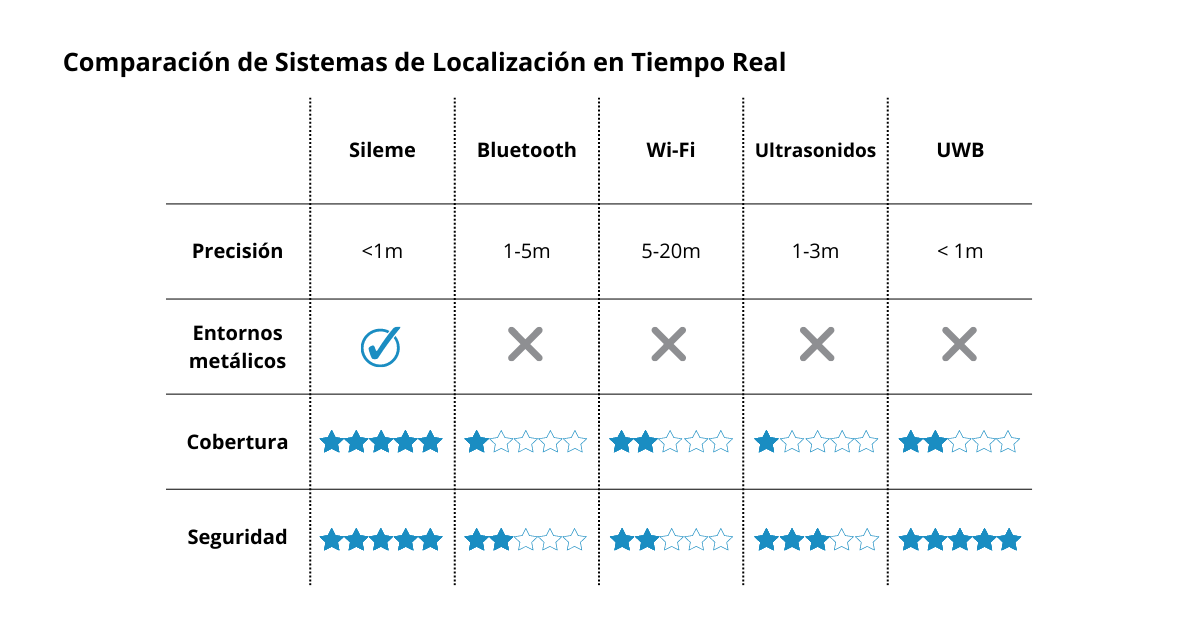Comparison between Indoor Positioning Systems
Currently, the need to locate objects and people is not limited to outdoor spaces. Many indoor environments, such as logistics centers, factories, Industry 4.0 facilities, hospitals, and large warehouses, require precise indoor positioning systems to improve operational efficiency and provide value-added services. However, GPS, which is the most commonly used positioning system outdoors, is ineffective indoors due to signal limitations and the need for a direct line of sight between the object to be located and the satellite. Fortunately, there are various technologies that enable indoor positioning. In this article, we will analyze some of these technologies and evaluate their effectiveness in different use cases.
What is indoor positioning?
Indoor positioning refers to the ability to track and locate objects, people, or devices within buildings or enclosed spaces. Unlike GPS, which uses satellite signals to determine location, indoor positioning systems employ different technologies to overcome signal limitations indoors, where satellite reception is scarce or nonexistent.
The use cases for indoor positioning are diverse. They include real-time management and tracking of assets, such as medical equipment in hospitals or supply chain management, such as tracking product packages in distribution centers, optimizing management and reducing the loss of valuable objects from manufacturing to customer delivery. In logistics centers, it can be used to obtain precise location information for tools and equipment, as well as tracking the path of each load, pallet, or order. Furthermore, indoor positioning systems can be used to enhance security in places like airports, providing precise tracking and monitoring of people and objects in restricted areas and locating them in emergency situations.
Key indoor positioning technologies:
Wi-Fi
Wi-Fi-based indoor positioning systems utilize existing wireless network infrastructure to estimate device locations. The main advantage of this system is its wide availability, as most public and commercial spaces have Wi-Fi access points. However, its accuracy is limited and can be affected by physical obstacles and variability in Wi-Fi signals, which may restrict its applicability in environments with a high density of devices.
Bluetooth
Bluetooth is another widely used technology for indoor positioning. Beacons are devices with a Bluetooth signal that emit signals detectable by mobile phones or receivers, which can be used to calculate their relative positions. The advantage of the Bluetooth system is its low power consumption and ability to provide good accuracy in short distances. However, its limited range can make precise tracking in larger areas challenging, requiring an increased number of beacons to cover the entire surface, and its accuracy may be affected by interference from other nearby Bluetooth devices.
Ultrasound
Ultrasound-based positioning systems use high-frequency sound waves to determine device locations. These systems offer a high degree of precision. However, they require complex installation of additional speakers and microphones, which can pose logistical challenges and increase implementation costs. Additionally, they do not perform well in metallic environments.
UWB
UWB technology is a positioning system that utilizes ultra-wideband radio waves to measure distances and calculate accurate real-time locations. This system provides high precision, even in environments with obstacles and a high density of devices. However, it can encounter difficulties in metallic environments and requires a large number of transmitters to cover large areas.
Sileme
Sileme is an emerging technology patented by Skylife for indoor location, positioning, and tracking. It is designed to address the issues that current systems face due to obstacles, especially in complex and metallic environments.
In this regard, Sileme offers maximum reliability and precision, ensuring that the object to be located never disappears and is tracked with minimal margin of error. Moreover, its broad coverage range allows for the localization of a large number of objects with a minimal deployment of beacons and electrical installation, and it operates without the need for direct line of sight between the beacon and the object being located.
Furthermore, unlike other systems, Sileme functions in complex and highly metallic environments. Its features make it applicable in buildings with changing structures without the need for modification of the installation. Because of this, it is applicable in all types of buildings, such as logistics centers, production plants, public buildings, shopping centers...
Therefore, Sileme offers endless possibilities for use, such as asset control, people guidance, access control, or emergency services. It positions itself as the most demanding and competent indoor positioning system on the market with great precision, without the need for line of sight, and valid in complex and metallic environments.





















